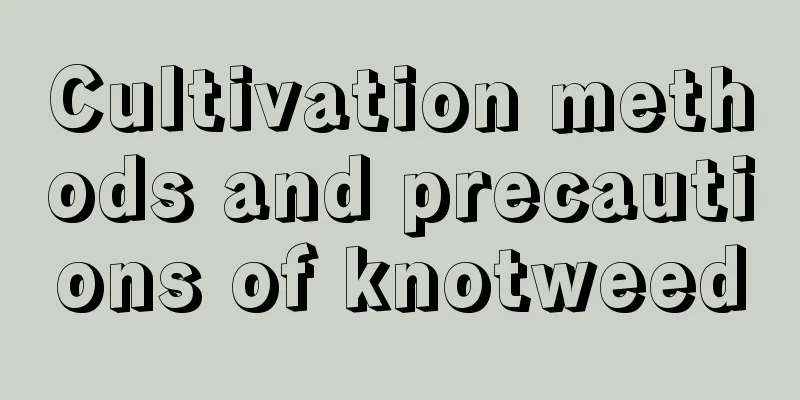Cultivation methods and precautions of knotweed

1. WateringIn spring and autumn, just keep the soil in the pot slightly moist when watering. In summer, when the temperature is high, the water evaporates quickly, so you can water more often. The best time to water is in the morning or afternoon when the sunlight is not very strong. In the cold winter weather, the plant grows very slowly, so try to water it as little as possible to prevent frost damage and waterlogging. 2. SoilIn terms of soil selection, in order to better cultivate its fleshy roots, it is best to choose sandy loam for cultivation. At the same time, the drainage performance of this soil is also very good, which can greatly reduce the possibility of root rot caused by water accumulation. 3. FertilizationDuring the growing season, in order to ensure that it can better differentiate flower buds, phosphorus-potassium compound fertilizer should be applied once in early autumn. After flowering, nitrogen fertilizer is generally used as the main fertilizer, and the focus at this time is on growing branches and leaves. Ensure it has the nutrients it needs for growth, and try not to fertilize at other times. 4. LightingWhen cultivating it, you should place it in a sunny place for maintenance. Pay attention to shade in summer to prevent sunburn. If its leaves turn yellow, it is likely caused by excessive light. In winter, as long as there is enough light and the temperature is suitable indoors, it will be fine. 5. NotesWhen raising plants indoors in winter, pay attention to ventilation. If the air is not circulating, pests and diseases are likely to occur. When watering it, be careful not to allow water to accumulate. Waterlogging can cause root rot and leaves to fall off, seriously affecting next year's flowering. |
>>: Goldfish Chlorophytum breeding methods and precautions
Recommend
Time to plant radishes
1. Autumn and winter planting Radishes are mainly...
Garlic freckle removal method
1. Choose garlic cloves First of all, you should ...
How to eat wolfberry
How to eat wolfberry Wolfberry snacks Wolfberry c...
Potted jasmine in spring and pruning
Preparation for potted jasmine In winter, jasmine...
What are the cultivation methods and precautions for potted lemon trees?
How to grow a potted lemon tree Potted lemon tree...
Does honeysuckle have a high yield? What is the yield per mu?
Does honeysuckle have a high yield? The yield of ...
With 1 rubber band and 1 vegetable basket, the succulent plants will immediately grow roots, with a 100% survival rate!
Pull a rubber band - hydroponics will start takin...
How to prune Schefflera
Thinning and light pruning of young plants The yo...
How many kilograms can each acre of land produce?
Cabbage yield per mu Cabbage refers to cabbage, w...
Management methods of Koelreuteria paniculata seedlings
Maintenance of Koelreuteria paniculata seedlings ...
What to do if the violet leaves are rotten
1. Place in a ventilated place (1) Specific reaso...
Do small lilies prefer shade or sun?
Do small lilies prefer shade or sun? The lily of ...
What variety of corn has high yield in 2022 (ranking of new variety seeds of stable yield corn)
As we enter 2022, a new year has begun. In terms ...
How to grow Jade Dew to make it bloom
1. Matrix suitability If you want the jade plant ...
What is the best month to plant peppers?
When to plant peppers Green peppers are planted f...









